May 21, 2025 | 03:53 GMT +7
May 21, 2025 | 03:53 GMT +7
Hotline: 0913.378.918
May 21, 2025 | 03:53 GMT +7
Hotline: 0913.378.918
Cassava is a plant that is less picky about soil, requires little investment capital, and is suitable for many farmers' ecology and economic conditions. With mainly gray sandy soil on ancient alluvial soil ideal for cassava, cassava has long been the main crop of the Tay Ninh people.
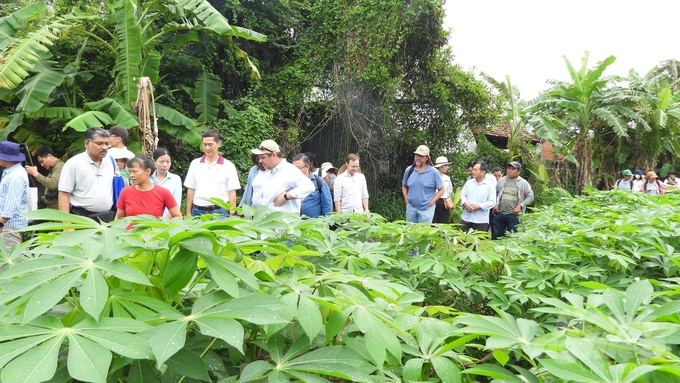
Cassava plants in Tay Ninh. Photo: Tran Trung.
In 2017, Tay Ninh was the first province to detect cassava leaf mosaic disease, a disease caused by whiteflies that still has no specific treatment, causing the yield of fresh cassava tubers to decrease. Cassava starch processing factories are still worried about the lack of raw materials for processing. But thanks to the long tradition of cassava farming, eagerness to learn, and diligence in applying technical advances in sustainable agriculture, Tay Ninh people have quickly adapted to the epidemic, maintaining the productivity and quality of tubers relatively stable.
As one of the farmers who has been attached to cassava for many years and owns a cassava area of up to hundreds of hectares, Mr. Bui Cong Ngoc, living in Tan Chau district, said cassava is a crop with nutritional solid from the ground. For sustainable farming, growers need to have a reasonable intensive farming regime. Fertilizing and adding nutrients to the soil is mandatory if you do not want the ground to become infertile, creating opportunities for diseases to attack quickly.

Mr. Ngoc (second from right) shows off the results of changing production thinking to a visiting group of international guests. Photo: Tran Trung.
According to Mr. Ngoc, unlike many others, he has limited the use of chemical fertilizers, instead using fertilizers of organic and micro-organic origin. At the same time, to improve the land, Mr. Ngoc applies the crop rotation method, planting many different types of crops, such as corn and peanuts, not just monocropping cassava.
How to plant cassava is also an essential factor that significantly affects productivity. When growing, the soil must be carefully cleaned and loose. Mr. Ngoc has tested many different planting methods, from the traditional planting of cuttings lying down to the new way of planting cuttings standing and slanting.
The results show that each planting method has different effectiveness, in which planting with oblique cuttings yields the highest. Cassava is planted in oblique cuttings to help the sprouts grow faster. If it rains, the cassava seedlings will not be buried by soil and will still germinate and expand at 96 - 98%. The yield of cassava grown from oblique cuttings is higher than other planting methods because the surface of the cuttings is in contact with the soil. The tubers grow in a circle around the base and have many layers of tubers.
While Tay Ninh's average cassava yield is about 35 tons/ha, Mr. Ngoc's family consistently averages 55 - 60 tons/ha. After deducting investment costs (about VND 30 million /ha), the profit for his family is about VND 100 million/ha each year.
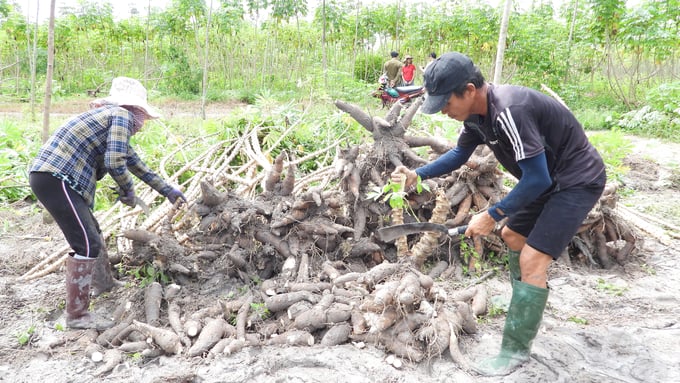
Thanks to good farming techniques, Tay Ninh cassava still maintains high productivity. Photo: Tran Trung.
According to the Tay Ninh Provincial Agricultural Extension Center, in addition to the initiative of local cassava growers, the Center also regularly organizes demonstration sites for sustainable intensive farming in strong localities such as Tan Bien and Tan Chau, Duong Minh Chau, Chau Thanh. These demonstration sites apply technical measures such as soil improvement and disease-free varieties.
According to the Department of Agriculture and Rural Development of Tay Ninh province, by 2023, the entire Tay Ninh province will have nearly 62,000 hectares of cassava, an increase of about 1,000 hectares compared to 2017 (the year the cassava mosaic epidemic broke out locally and spread throughout the country). To partly meet the problem of raw materials for cassava starch businesses, from the beginning of the cassava leaf mosaic epidemic, Tay Ninh authorities and farmers have agreed to implement the "Zero disease" of leaf cassava drastically. Along with that, urgently finding mosaic-resistant varieties is an urgent requirement.
Thanks to being part of the national cassava testing system, under the coordination of international organizations and tireless local efforts, in 2021, the locality selected 175 cloned cassava lines with mosaic resistance. Among them, 23 cloned cassava lines with high starch yield have been chosen for preliminary yield trials in 2022.
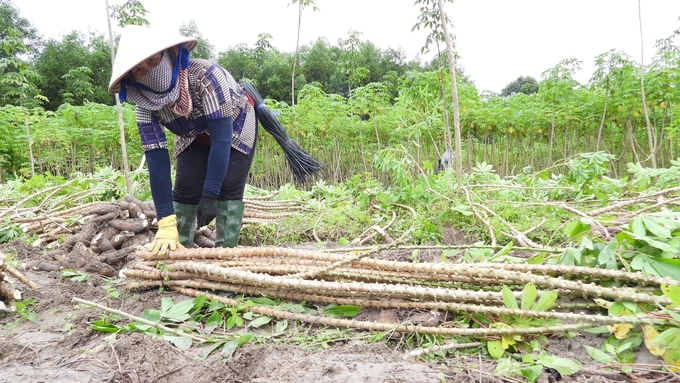
Tay Ninh has a total area of about 2,000 hectares of new cassava varieties. Photo: Tran Trung.
To date, there have been 6 varieties, including HN1, HN3, HN5, HN36, HN80, and HN97, licensed for circulation in the Southeast region by the Ministry of Agriculture and Rural Development. Tay Ninh province is continuing to conduct testing to find new viable cassava varieties to propose to the Ministry of Agriculture and Rural Development for circulation licenses to improve the quality of new varieties and prevent typical diseases on cassava.
According to Mr. Nguyen Dinh Xuan, Director of the Department of Agriculture and Rural Development of Tay Ninh province, from the available varieties, the locality focuses on promoting rapid seed multiplication. Currently, the total area of new varieties is about 2,000 hectares. The area of cassava varieties resistant to mosaic disease in Tay Ninh can increase to 10,000 hectares in the 2023 - 2024 crop year.
Translated by Tuan Huy
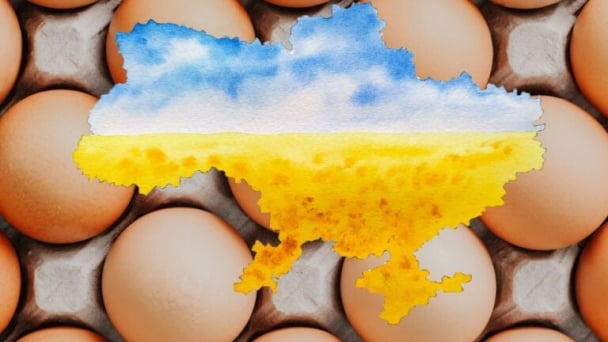
(VAN) Oliyar, a prominent Ukrainian oil and fat manufacturer, has revealed plans to build a farm for 2.3 million laying hens in the Lviv region. The additional production quantities promise to change the competitive landscape of the egg market of the Eastern Europe region.
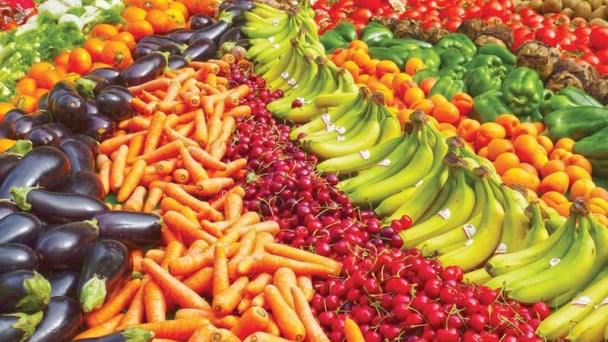
(VAN) On May 15, Ministry of Agriculture and Environment of Vietnam hosted the 'Connecting Vietnam - Germany agricultural, forestry and fishery trade' seminar in Berlin, Germany.
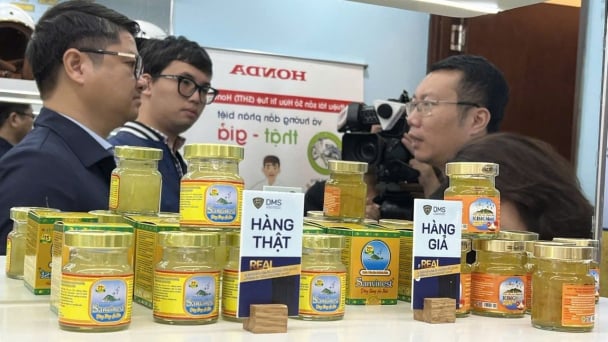
(VAN) In the face of counterfeit and imitation products, Khanh Hoa Salanganes Nest Company hopes for the prompt completion of the legal framework, strict enforcement against violations, and protection of the bird’s nest brand.
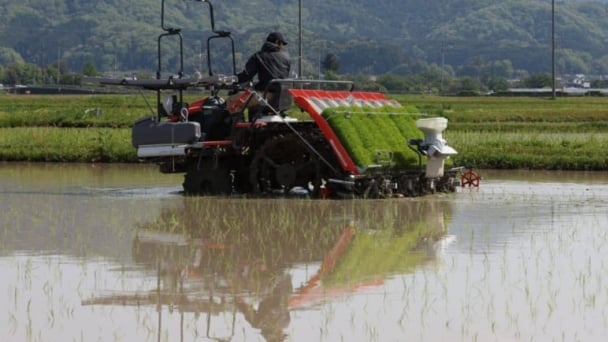
(VAN) Japan's efforts to lower the price of rice through the release of its stockpile may finally be making some progress, albeit at a snail's pace.

(VAN) U.S. tariffs are not only a 'shock', but also an opportunity for Vietnamese businesses to renew their mindset toward comprehensive development.
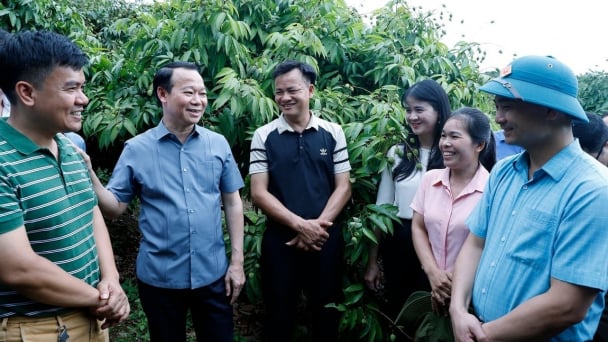
(VAN) As Bac Giang lychee enters the harvest season, Minister Do Duc Duy expects that the fruit will contribute greatly to agricultural exports due to standardized production and deep processing.
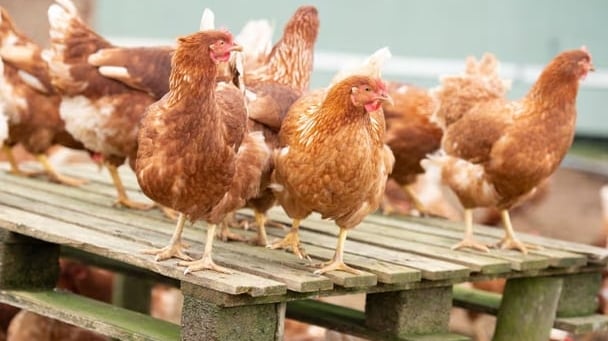
(VAN) Consumers have shown a preference for free-range eggs, but those farming systems are more vulnerable to biosecurity risks like bird flu.